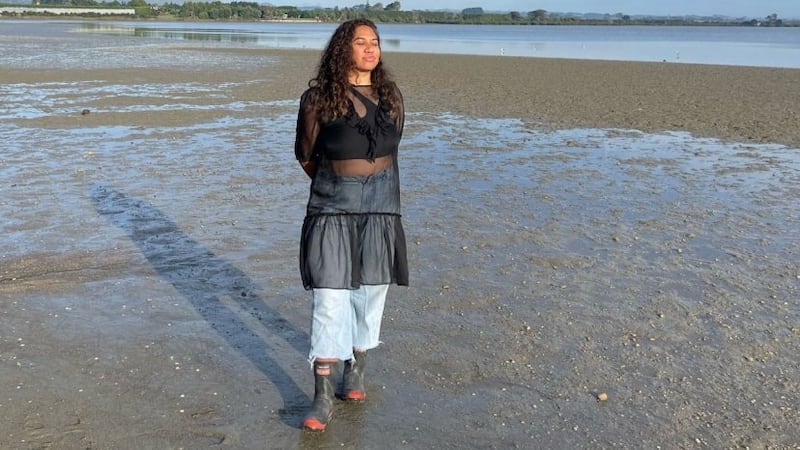Emerging artist Te Ara Minhinnick of Ngāti Te Ata's work He taonga te ware is on display at an art exhibition in central Auckland.
The 26-year-old former wharekura student says her inspiration for her work comes from a conversation she had with her dad about the retention of knowledge, and also the theme of the exhibition itself, Between the gift and its reprisal.
“As a whakapākehātanga (English translation), he taonga te ware or the gift of forgetting acknowledges what needs to be remembered when forgetting exists. In my mahi, I built this whakaaro, of taonga, of ware around whenua as a source to remember physically in texture, smell, and, feel and in its history, presence and, politics as a subsequence.”
Discovering a passion for mahi toi
Before she immersed herself in mahi toi, Minhinnick predominantly spent her days paddling waka. At the time, she wanted to find creative ways of documenting the stories on her waka journeys, and so, with no experience in conventional art making, she applied to attend Whitecliffe College Of Arts And Design in Tāmaki Makaurau.
“When I was accepted I remember I spent the two-and-a-half hour travel time from my home in Waiuku to school on a bus, train and then bus again with my paddle next to me. Cringey but looking back now I see that 'voyage' of sorts as an early artwork in itself.”
Whānau influence
Minhinnick credits her confidence to her tupuna, coming from a family line of ecological activists. Her grandmother Nganeko Minhinnick, who died in 2017 spent much of her life advocating for environmental issues and spearheaded the Manukau claim which was heard in 1985 and challenged the effects of development on the health of the Manukau harbour.
“I am in awe of my iwi and the abundance of skill the whānau poses across our rohe; from whitebaiting, scalloping and diving to watching my nan standing in the High Court when I was nine years old. I think observing whānau members embodying mātauranga has nurtured confidence in me and has given me a place to stand; my mahi then comes from this place.”
Mahi toi in mainstream spaces
Minhinnick says there is a certain responsibility that comes when working with whenua and Māori, and encourages more institutions to recognise the legitimacy of tangata taketake (indigenous people).
“As an artist, no matter where you go mainstream or not - having a base of protocols is key and acts as a guide and a safety blanket when needed.
“I'm lucky in that I'm coming into a time where ringa toi (artists) before me have already paved a way for us teina to now walk and I acknowledge their mahi."

